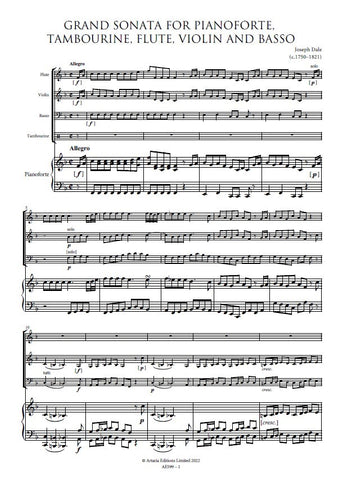Description |
Pleyel, Ignaz (1757-1831)
|
||||||||||||||||||||
Details |
Ignaz Pleyel (1757-1831) was at one time the most famous composer in the world. The popularity of his music eclipsed that of even his teacher Haydn and publishers vied to bring out his latest works as soon as they were finished. Some 2000 separate prints of Pleyel works had appeared by 1800 and his fame extended to every corner of Europe and as far afield as North America. Pleyel's career as a composer spanned less than thirty years with the majority of his works composed in the 1780s. He founded a successful publishing house in Paris in the mid-1790s and later began manufacturing keyboard instruments. With increasing demands on his time from his business concerns Pleyel's productivity as a composer dropped sharply and he ceased composing around 1805. Pleyel's three Trios Concertants, as they are styled in the earliest extant editions, appeared in 1787. Unlike the composer's quartets and quintets, which are generally in three movements, the string trios are cast in two movements - an opening Allegro and a Rondo - a practice unusual in Vienna but popular in France. The use of the term 'concertant' in the title signifies an equality of parts; that is, each of the instruments in the ensemble plays an important role in presenting thematic material. Pleyel's trios share many stylistic qualities with his quartets and quintets. His feel for the medium is at once apparent in his impressive exploitation of contrasting musical textures which range from bold, homophonic writing in a quasi-orchestral style to brief sections of canonic writing. The beauty and sophistication of these small-scale works can only make one regret that he did not write more works in the medium. Allan Badley |
Loading...
Error














